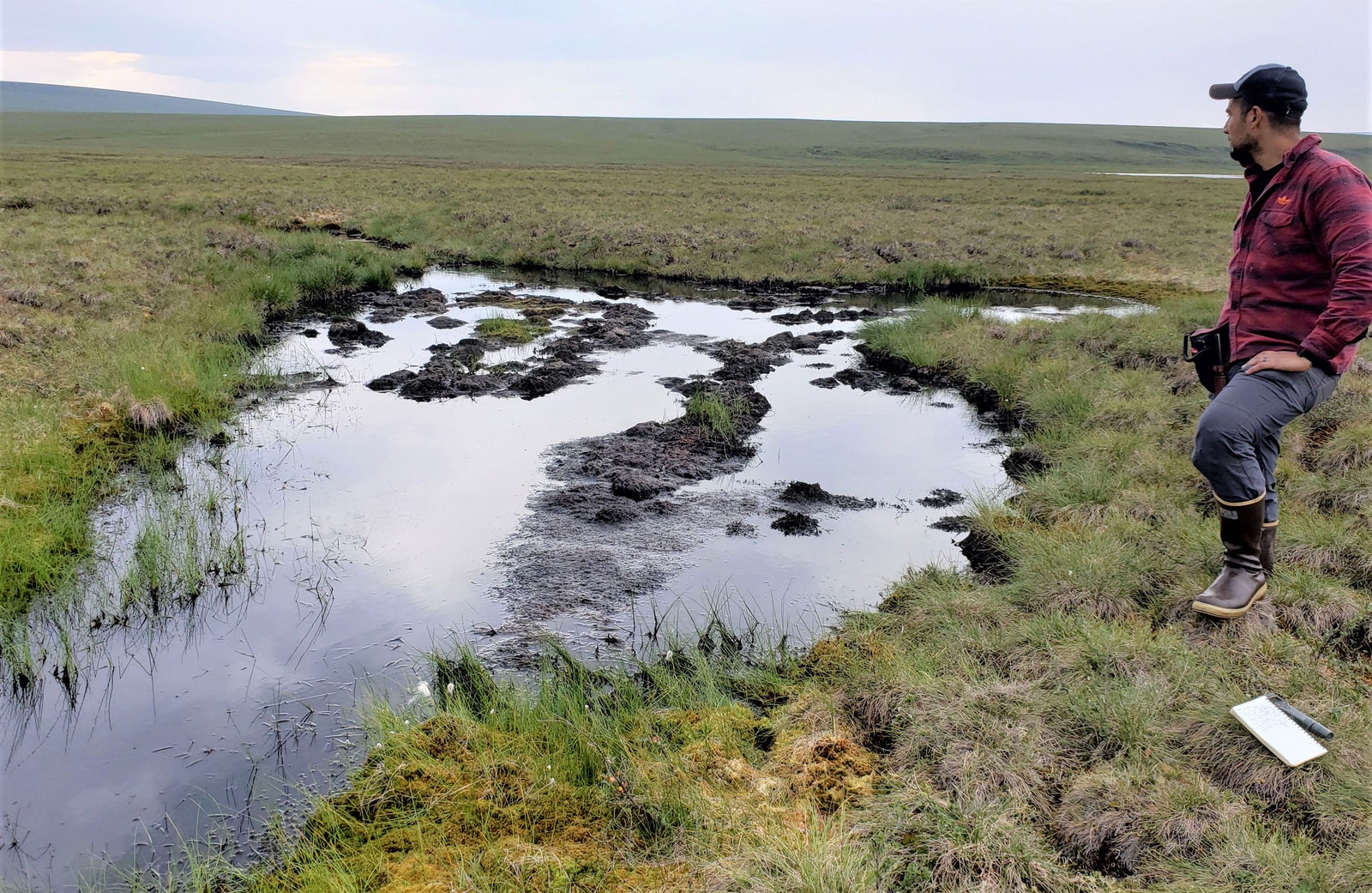But that insulation is being undone by climate change, which is heating the Arctic four times as fast as the rest of the planet. “In an undisturbed tundra ecosystem, permafrost is protected by the overlying vegetation and soil organic layers from warming climate,” says climate scientist Yaping Chen of the University of Illinois at Urbana-Champaign, lead author on the new paper. “However, when fire occurs, it kills vegetation and removes the insulating organic layers to allow heat to penetrate downward along the soil profile that melts the permafrost.”
That’s allowing vegetation to dry out more easily and giving it more opportunities to ignite during increasingly frequent lightning storms. (More heat means more hot air rising into the atmosphere, which is how thunderclouds form.) Hotter temperatures due to climate change already trigger the thawing that creates thermokarst, the way an ice cube might melt slowly on your countertop. But a wildfire is like holding a flame to that cube.
To make matters worse, the wildfire darkens the ground by charring it, so it will now heat up even more quickly in the sun. If the landscape is level, a neat pit of melted ice will form and grow, because water also readily absorbs solar radiation. All the vegetation that was previously locked in the ice will also sink to the bottom of the watery pit, darkening it even more.
Permafrost is basically a refrigerator for organic matter—and if it warms and thaws, microbes start to proliferate within it, just as they would on your food if you unplugged your fridge. Only these tundra microbes are chewing through millennia-old organic matter, releasing methane, a greenhouse gas that’s 80 times as potent as carbon dioxide. (If there isn’t standing water in the thawed permafrost and the plant material is drier, the microbes will release CO2 instead, but that’s less likely because the craters tend to create little ponds.)
“With thermokarst you expose deeper and deeper layers of permafrost to the thawing, much more efficiently than without thermokarst,” says University of Alaska Fairbanks permafrost geophysicist Vladimir Romanovsky, who wasn’t involved in the work. “The thermokarst process can turn a surface which was relatively dry into some sort of wetland, and wetlands are producers of of methane.”
A researcher looks at an expanding thermokarst pit.
Photograph: Christian Andresen and Mark Lara




